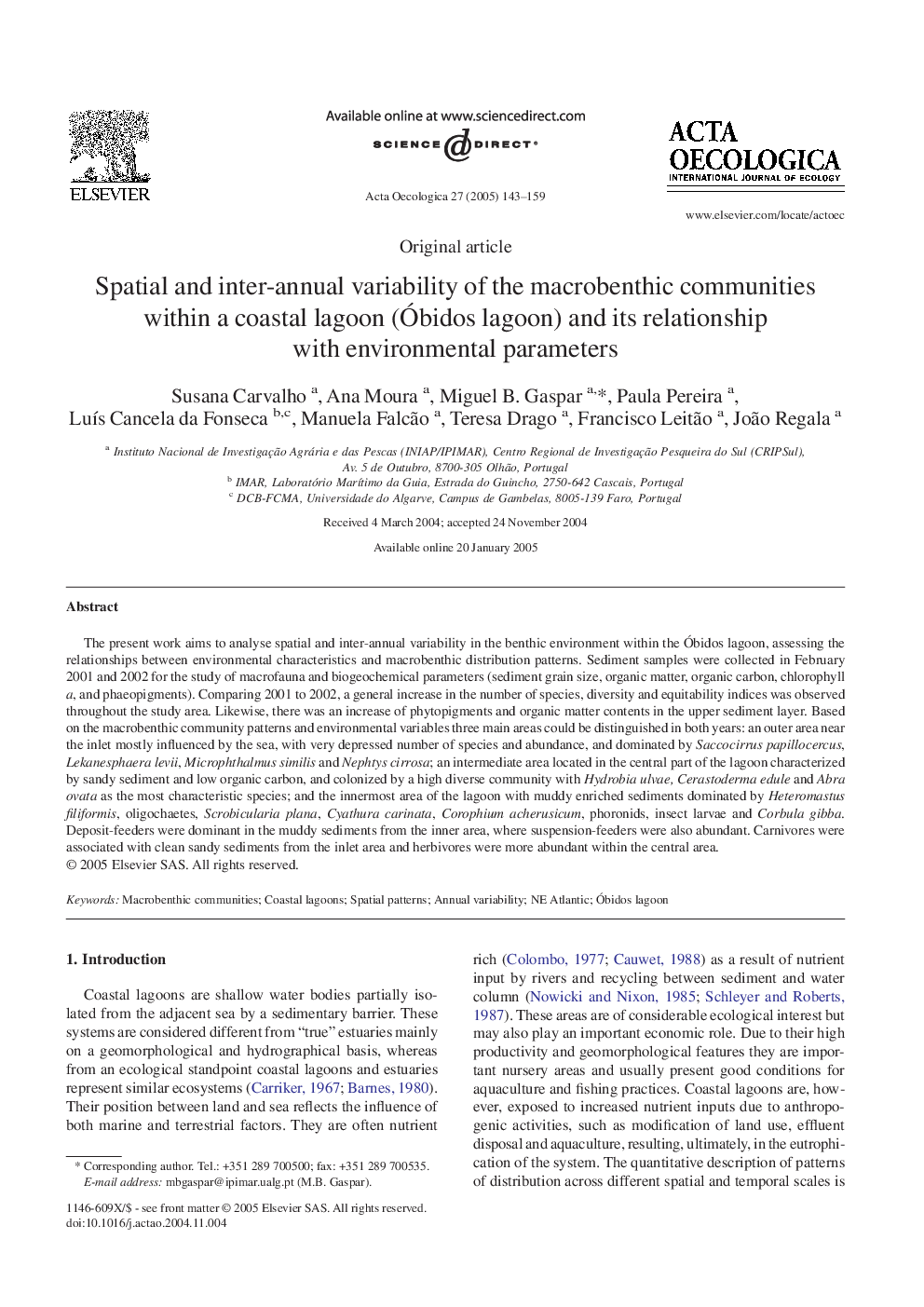| کد مقاله | کد نشریه | سال انتشار | مقاله انگلیسی | نسخه تمام متن |
|---|---|---|---|---|
| 9444887 | 1304075 | 2005 | 17 صفحه PDF | دانلود رایگان |
عنوان انگلیسی مقاله ISI
Spatial and inter-annual variability of the macrobenthic communities within a coastal lagoon (Ãbidos lagoon) and its relationship with environmental parameters
دانلود مقاله + سفارش ترجمه
دانلود مقاله ISI انگلیسی
رایگان برای ایرانیان
کلمات کلیدی
موضوعات مرتبط
علوم زیستی و بیوفناوری
علوم کشاورزی و بیولوژیک
بوم شناسی، تکامل، رفتار و سامانه شناسی
پیش نمایش صفحه اول مقاله

چکیده انگلیسی
The present work aims to analyse spatial and inter-annual variability in the benthic environment within the Ãbidos lagoon, assessing the relationships between environmental characteristics and macrobenthic distribution patterns. Sediment samples were collected in February 2001 and 2002 for the study of macrofauna and biogeochemical parameters (sediment grain size, organic matter, organic carbon, chlorophyll a, and phaeopigments). Comparing 2001 to 2002, a general increase in the number of species, diversity and equitability indices was observed throughout the study area. Likewise, there was an increase of phytopigments and organic matter contents in the upper sediment layer. Based on the macrobenthic community patterns and environmental variables three main areas could be distinguished in both years: an outer area near the inlet mostly influenced by the sea, with very depressed number of species and abundance, and dominated by Saccocirrus papillocercus, Lekanesphaera levii, Microphthalmus similis and Nephtys cirrosa; an intermediate area located in the central part of the lagoon characterized by sandy sediment and low organic carbon, and colonized by a high diverse community with Hydrobia ulvae, Cerastoderma edule and Abra ovata as the most characteristic species; and the innermost area of the lagoon with muddy enriched sediments dominated by Heteromastus filiformis, oligochaetes, Scrobicularia plana, Cyathura carinata, Corophium acherusicum, phoronids, insect larvae and Corbula gibba. Deposit-feeders were dominant in the muddy sediments from the inner area, where suspension-feeders were also abundant. Carnivores were associated with clean sandy sediments from the inlet area and herbivores were more abundant within the central area.
ناشر
Database: Elsevier - ScienceDirect (ساینس دایرکت)
Journal: Acta Oecologica - Volume 27, Issue 3, MayâJune 2005, Pages 143-159
Journal: Acta Oecologica - Volume 27, Issue 3, MayâJune 2005, Pages 143-159
نویسندگان
Susana Carvalho, Ana Moura, Miguel B. Gaspar, Paula Pereira, LuÃs Cancela da Fonseca, Manuela Falcão, Teresa Drago, Francisco Leitão, João Regala,